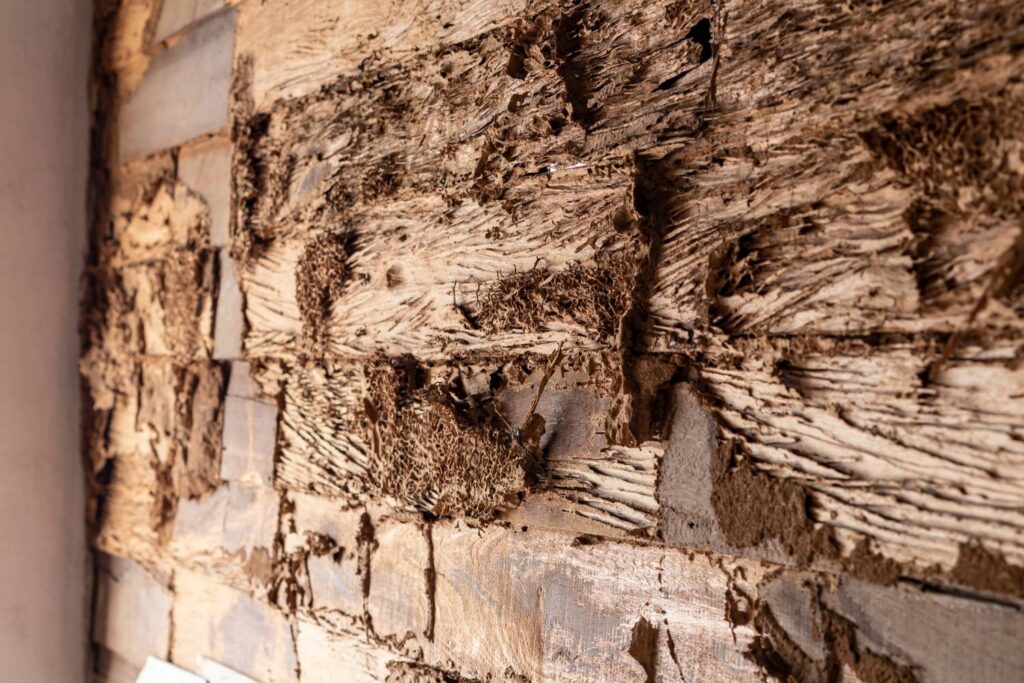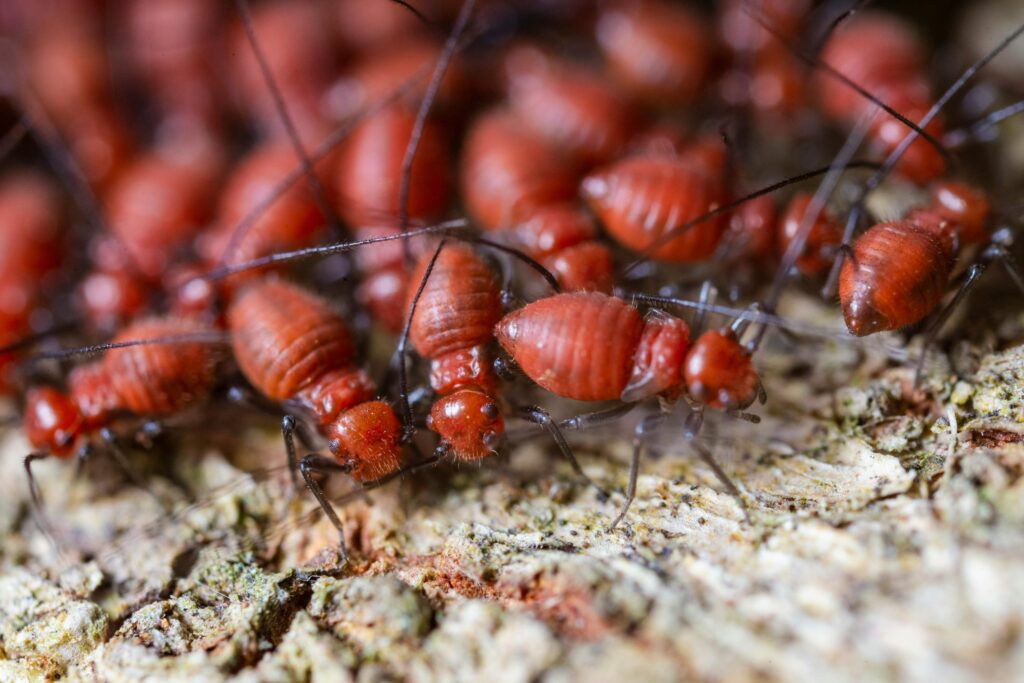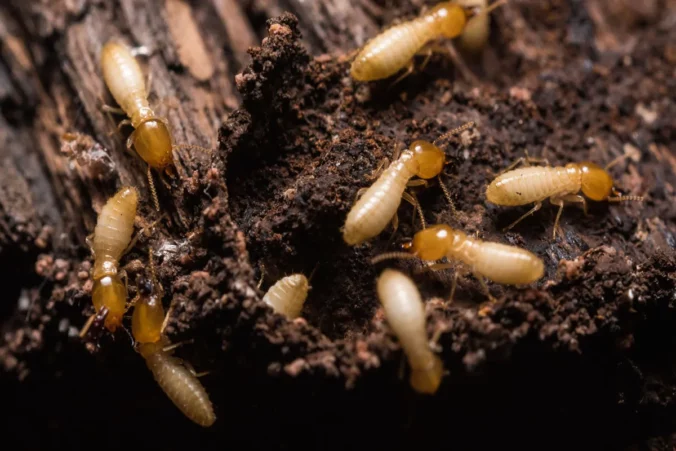Termites cause millions of dollars in property damage across Sydney each year, silently eating away at the structural integrity of homes. Termite pest control Sydney services offer comprehensive solutions to protect your most valuable investment from these destructive pests.
A termite infestation rarely announces itself until significant damage has already occurred. Wood that sounds hollow when tapped, discarded wings near windowsills, or mud tubes along foundation walls signal an urgent need for professional intervention. Delaying termite control penrith allows colonies to expand rapidly, with some species consuming up to 15 pounds of wood per week.
The full home treatment process addresses both immediate elimination and long-term prevention. Licensed technicians conduct extensive property assessments, identifying every access point and nesting area before implementing targeted eradication strategies. This thorough approach ensures termites are eliminated at their source rather than simply treating visible symptoms.
Understanding what happens during professional termite treatment helps homeowners prepare properly and set realistic expectations. From the initial inspection through post-treatment monitoring, each phase plays a critical role in achieving a pest-free environment. The investment in comprehensive termite control protects your property value, prevents costly structural repairs, and provides peace of mind that your home remains safe from future infestations.

What Does the Initial Termite Inspection Involve?
A professional termite inspection Sydney begins with licensed technicians conducting a systematic examination of your entire property, typically lasting 60-90 minutes depending on the size of your home. These experts arrive equipped with specialized tools including moisture meters, thermal imaging cameras, and inspection mirrors to detect termites in hidden areas where visual inspection alone would miss critical signs.
The Comprehensive Property Assessment Process
The inspection starts at the exterior perimeter of your home, where technicians examine the foundation, external walls, and any timber structures within close proximity to the building. They look for mud tubes—the telltale highways termites build to travel between their colony and food sources—along with damaged wood, discarded wings, and termite droppings known as frass.
Licensed inspectors pay particular attention to areas where moisture accumulates, as termites are drawn to damp environments. This includes:
- Air conditioning units and their drainage systems
- Downpipes and gutter overflow points
- Garden beds built against house walls
- Leaking taps or irrigation systems
- Areas with poor drainage or standing water
Identifying Critical Termite Entry Points
Termite entry points are often surprisingly small—these pests can squeeze through cracks as narrow as 1.5mm. Technicians meticulously examine expansion joints, weep holes, and any gaps in the building’s exterior envelope. They inspect where utilities enter the home, including plumbing penetrations, electrical conduits, and cable entry points, as these commonly provide undetected access routes.
The inspection extends to subfloor areas and roof voids, spaces homeowners rarely access but where termite activity frequently goes unnoticed. Technicians use torches and inspection cameras to navigate these confined spaces, checking timber joists, bearers, and roof trusses for hollow-sounding wood or visible damage.
Structural Elements Under Scrutiny
Inside the home, inspectors tap walls and timber frames listening for the hollow sound that indicates termite damage. They examine skirting boards, door frames, window sills, and built-in cabinetry—all potential feeding sites for hungry termite colonies. Particular attention goes to bathrooms, laundries, and kitchens where moisture levels tend to be higher.
How Is a Tailored Treatment Plan Developed?
A termite treatment plan begins the moment technicians complete their inspection and analyze all collected data. The plan directly addresses the unique characteristics of your property, accounting for construction type, infestation severity, and environmental factors specific to your Sydney location.
Assessing Severity and Specific Property Conditions
Infestation level assessment forms the foundation of any effective treatment strategy. Technicians evaluate multiple factors to determine how extensively termites have compromised your home:
- Colony size and activity levels observed during inspection
- Structural damage extent across different areas of the property
- Termite species identification (subterranean, drywood, or dampwood) using resources like this EPA guide on termites
- Access points and entry routes termites use to infiltrate the building
- Moisture levels and conducive conditions that attract termites, which can be managed with effective moisture control
The assessment considers your property’s age, building materials, and previous pest control history. Older homes with timber frames require different approaches compared to modern brick-and-concrete constructions. Properties with extensive landscaping, timber decking, or garden beds adjacent to foundations face higher risk factors that influence treatment decisions.
Technicians document vulnerable zones where termites typically establish colonies—subfloor areas, wall cavities, roof voids, and areas with water damage or poor ventilation. This detailed mapping ensures no potential infestation site goes untreated.
Creating a Treatment Strategy Based on Findings
Once the assessment concludes, technicians design a customized pest control strategy matching your property’s specific needs. The strategy outlines:
- Primary treatment methods targeting active infestations
- Secondary preventive measures protecting against re-infestation
- Treatment timeline with expected completion dates
- Access requirements for different property areas
- Follow-up inspection schedule to verify treatment success
The strategy balances immediate eradication needs with long-term protection goals. Severe infestations demand aggressive treatment approaches, while minor termite activity might respond to localized treatments combined with monitoring systems.
Technicians explain the proposed plan in detail, addressing homeowner concerns about treatment duration, property access requirements, and any temporary displacement needs. Transparency about what each treatment phase involves helps homeowners understand the process involved in effectively managing termite infestations.
What Methods Are Used During Full Home Termite Treatment?
Pesticide Application
Pesticide application forms the backbone of most termite treatments in Sydney, targeting active colonies and creating protective barriers around your property. Licensed technicians apply liquid termitermicides to soil around the foundation, creating a treated zone that kills termites on contact and prevents new colonies from establishing. These chemical treatments penetrate deep into the ground, reaching areas where termites tunnel and nest.
The application process involves:
- Drilling small holes into concrete slabs
- Injecting termiticide into wall cavities
- Treating timber structures directly
Technicians use specialized equipment to ensure even distribution of the chemical barrier, paying particular attention to high-risk areas like bathrooms, kitchens, and subfloor spaces where moisture attracts termites.
Physical Barrier Systems and Termite Traps
Termite traps offer a targeted approach that works alongside or as an alternative to chemical treatments. These monitoring stations are strategically placed around your property’s perimeter, containing cellulose material that attracts foraging termites. Once termites discover the bait, they consume it and carry the slow-acting toxin back to their colony, eliminating the entire population including the queen.
The trap system requires regular monitoring by technicians who check stations every few months, replacing consumed bait and assessing termite activity levels. This method proves particularly effective for properties where chemical barriers are impractical or where homeowners prefer a more targeted treatment approach.
Physical barriers include stainless steel mesh or graded stone particles installed during construction or renovation. While not part of standard treatments for existing infestations, technicians may recommend these additions during major repairs to prevent future termite entry.
When Is Fumigation Sydney Required?
Fumigation Sydney services become necessary when termite infestations are severe, widespread, or involve drywood termites that nest within timber rather than soil. This intensive treatment involves sealing your entire home with specialized tarps and introducing sulfuryl fluoride gas that penetrates all spaces, killing termites at every life stage.
The fumigation process requires homeowners to vacate the property for 24-72 hours while the gas does its work. Technicians carefully seal the structure, monitor gas concentration levels throughout treatment, and conduct thorough aeration before declaring the home safe for re-entry
How Should Homeowners Prepare Their Property for Treatment?
Proper preparation makes termite treatment more effective and ensures technicians can access all affected areas. Homeowners should begin preparing their property at least 24-48 hours before the scheduled treatment date, following specific steps that create optimal conditions for pest control professionals to work efficiently.
Why Is Clearing Clutter Essential Before Treatment?
Clutter removal allows technicians to reach wall cavities, baseboards, and hidden spaces where termites typically nest. Stacked boxes, stored items against walls, and accumulated belongings create barriers that prevent thorough treatment application. Removing these obstacles from rooms, garages, and storage areas ensures chemicals or monitoring devices can be placed exactly where needed. The process also helps homeowners identify previously hidden termite damage that requires attention.
What Cleaning Steps Should Precede Treatment?
A thorough cleaning before termite treatment removes dust, debris, and organic matter that might interfere with pesticide adhesion or barrier effectiveness. Vacuuming floors, wiping down baseboards, and mopping hard surfaces creates clean application zones. Pay special attention to areas near walls, corners, and entry points where termites commonly travel. This cleaning phase also eliminates food particles that could attract other pests during the treatment period.
How Should Furniture and Appliances Be Repositioned?
Moving furniture and appliances away from walls creates a clear perimeter of at least 30-50 centimeters for technician access. This spacing allows professionals to:
- Inspect wall cavities and skirting boards thoroughly
- Apply treatments directly to structural timber
- Install monitoring stations or bait systems
- Check for moisture issues behind large items
- Access electrical outlets and plumbing entry points
Heavy appliances like refrigerators, washing machines, and entertainment units should be pulled forward carefully to avoid damaging flooring or disconnecting utilities. Beds, wardrobes, and sofas need similar repositioning to expose potential termite pathways.
What Items Require Protection During Treatment?
Securing or covering food and delicate items prevents contamination from treatment products. The homeowner checklist for preparing home for termite treatment should include:
Food Items:
- Transfer pantry contents to sealed containers or remove from treatment areas
- Empty kitchen drawers an
How Do Professionals Ensure Safe and Eco-Friendly Treatments?
Licensed termite control professionals in Sydney prioritize the health of your family and the environment by using low-toxicity products and implementing strict safety protocols throughout the treatment process. Eco-friendly termite control Sydney specialists select treatments that target termites specifically while minimizing impact on humans, pets, and beneficial insects.
Environmentally Responsible Product Selection
Modern termite treatments have evolved significantly from harsh chemicals of the past. Today’s professionals choose from a range of environmentally conscious options:
- Termidor and similar non-repellent termiticides that use minimal active ingredients
- Bait systems containing insect growth regulators that specifically target termite biology
- Physical barriers made from stainless steel mesh or graded stone particles
- Heat treatment methods that eliminate termites without any chemical application
- Botanical-based solutions derived from natural compounds
The selection depends on your property’s specific needs, the severity of infestation, and proximity to water sources or sensitive areas. Technicians assess these factors during inspection to recommend the most appropriate eco-friendly approach.
Strict Adherence to Australian Safety Standards
Safe pesticide use requires comprehensive training and certification. All termite control technicians in Sydney must hold current licenses issued by regulatory authorities, demonstrating their knowledge of:
- Proper chemical handling and storage procedures
- Correct application rates and methods for each product
- Personal protective equipment requirements
- Emergency response protocols
- Environmental protection regulations
Technicians follow manufacturer guidelines precisely, applying products only in recommended quantities and locations. They maintain detailed records of all chemicals used, including Safety Data Sheets (SDS) that outline potential hazards and first aid measures.
Minimizing Health Risks During Treatment
Professional teams take multiple precautions to protect household members throughout the treatment process. Before application begins, technicians explain which areas will be treated and establish clear safety zones.
The treatment timeline typically includes:
- Pre-treatment briefing where technicians discuss products being used and any necessary precautions
- Active treatment period when residents and pets should remain outside treated areas
- Ventilation phase allowing treated spaces to air out completely
- Re-entry clearance confirming it’s safe to return
What Long-Term Prevention Strategies Are Recommended?
Termite prevention Sydney specialists implement physical and chemical barriers immediately after treatment to create a protective shield around your property. These barriers typically include treated soil zones around the foundation perimeter and chemical applications to vulnerable timber areas. Monitoring stations placed strategically around your yard act as early warning systems, allowing technicians to detect termite activity before it reaches your home’s structure.
Physical barriers work by creating an impenetrable layer that termites cannot cross without detection. Chemical barriers use termiticides that remain active in the soil for several years, repelling or eliminating termites on contact. The combination of both methods provides comprehensive protection that addresses multiple entry points simultaneously.
How Often Should Properties Undergo Termite Inspections?
Licensed technicians recommend annual inspections as the minimum standard for Sydney properties. High-risk areas or homes with previous termite history may require inspections every six months. These scheduled visits allow professionals to identify subtle warning signs that homeowners typically miss, including mud tubes, hollow-sounding timber, or minor structural changes.
During routine inspections, technicians examine:
- Foundation walls and basement areas
- Crawl spaces and subfloor ventilation
- Roof voids and ceiling cavities
- Timber fences and garden structures
- Tree stumps and wooden landscaping features
Early detection through regular monitoring prevents minor termite activity from escalating into costly structural damage. Inspection reports document any changes over time, creating a historical record that helps predict future risk patterns.
What Protection Do Service Warranties Provide?
Most professional termite pest control Sydney companies offer warranty on services ranging from one to seven years, depending on the treatment type and property conditions. These warranties guarantee that if termites return within the specified period, the company will re-treat affected areas at no additional cost. The warranty coverage typically includes both labour and materials for any necessary follow-up treatments.
Warranty terms usually require homeowners to maintain scheduled inspections and address any conducive conditions identified by technicians. Common warranty exclusions include damage from new construction, landscaping changes that compromise barriers, or failure to report termite activity promptly. Reading warranty documentation carefully ensures you understand coverage limitations and maintenance obligations.
What Maintenance Responsibilities Fall to Homeowners?
Ongoing maintenance plans succeed when
How Does Termite Pest Control Fit Into Broader Pest Management Services?
Termite pest control in Sydney is just one part of a larger strategy for protecting your home. Professional pest control companies offer integrated pest management Sydney solutions that address multiple threats at once, creating a unified defense system for your property.
What Additional Services Do Pest Control Professionals Provide?
Licensed technicians deliver a full range of pest management solutions beyond termite treatment. These services work together to create a protective shield around your home:
- Cockroach control targeting both German and American cockroach species through baiting systems and residual spray treatments
- Rodent treatments including mice and rat extermination using traps, bait stations, and exclusion techniques
- Ant extermination addressing various species from black ants to carpenter ants
- Spider removal programs focusing on redback spiders, white-tailed spiders, and funnel-web spiders
- Bird-proofing solutions preventing nesting and droppings in roof spaces and balconies
- Bed bug elimination using heat treatments and specialized insecticides
The same inspection that identifies termite activity often reveals other pest issues. Technicians trained in multiple pest disciplines can spot signs of rodent droppings, cockroach harbourage areas, or spider nests during their assessment. This multi-faceted approach saves homeowners time and money by addressing several problems in one visit.

Why Choose Comprehensive Pest Management Over Single-Issue Solutions?
Treating only termites while ignoring other pest pressures leaves your home vulnerable. Cockroach control becomes particularly important because these pests can contaminate food sources and trigger allergies. When technicians treat for termites in wall cavities and subfloor areas, they can simultaneously address cockroach populations in the same locations.
Rodent treatments complement termite control by sealing entry points that both pests exploit. Rats and mice create gaps in building structures that later become termite entry routes. A comprehensive treatment plan identifies and blocks these access points, preventing multiple pest types from entering.
The synergy between different pest control methods creates stronger protection. Barrier treatments applied for termites can deter ants and spiders. Monitoring systems installed for termite detection can also track rodent activity
Conclusion
Why should Sydney homeowners trust professional termite control services?
Professional expertise makes all the difference when dealing with termite infestations. Licensed technicians bring specialized knowledge, advanced tools, and proven strategies that DIY methods simply cannot match. Each property receives a customized approach based on its unique conditions, infestation severity, and structural vulnerabilities.
What makes timely intervention critical for lasting protection?
Delaying termite treatment allows colonies to expand rapidly, causing extensive structural damage that becomes increasingly expensive to repair. Early intervention through effective termite control Sydney services stops infestations before they compromise your home’s integrity. Professional teams identify hidden colonies and entry points that untrained eyes often miss.
How do full home treatments deliver comprehensive protection?
The full home treatment benefits extend far beyond immediate eradication. These comprehensive solutions include:
- Elimination of active termite colonies throughout the property
- Installation of protective barriers and monitoring systems
- Regular follow-up inspections to catch new activity early
- Service warranties that guarantee long-term results
Termite Pest Control Sydney: What Happens During a Full Home Treatment represents a complete investment in your property’s future. Licensed professionals combine immediate eradication with preventative strategies, ensuring your home remains protected for years to come. Contact a certified termite control specialist today to schedule your comprehensive inspection and treatment plan.
Related : Termite Inspection Sydney Checklist: What Inspectors Look For


Leave a Reply